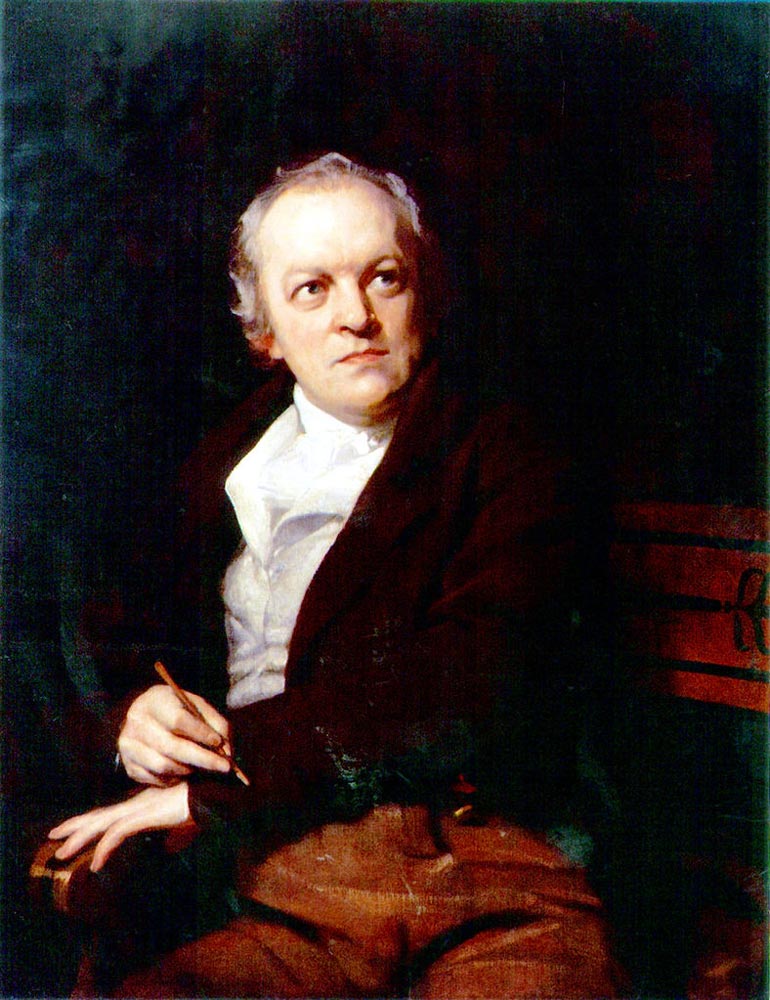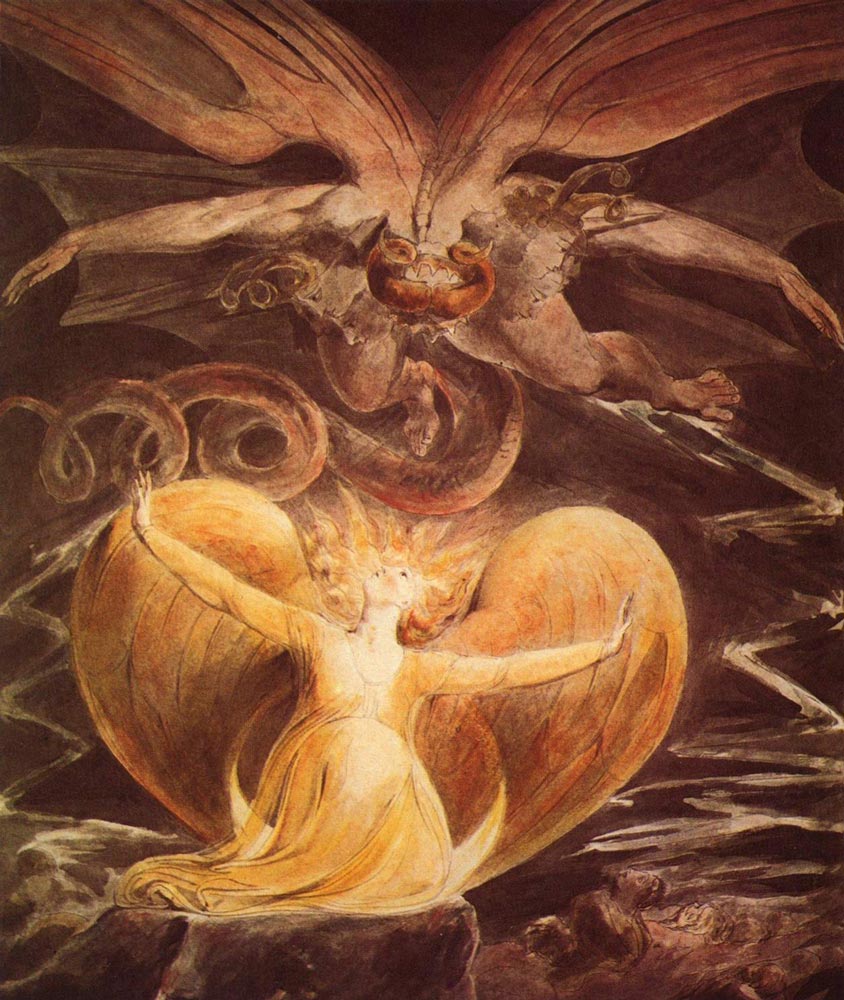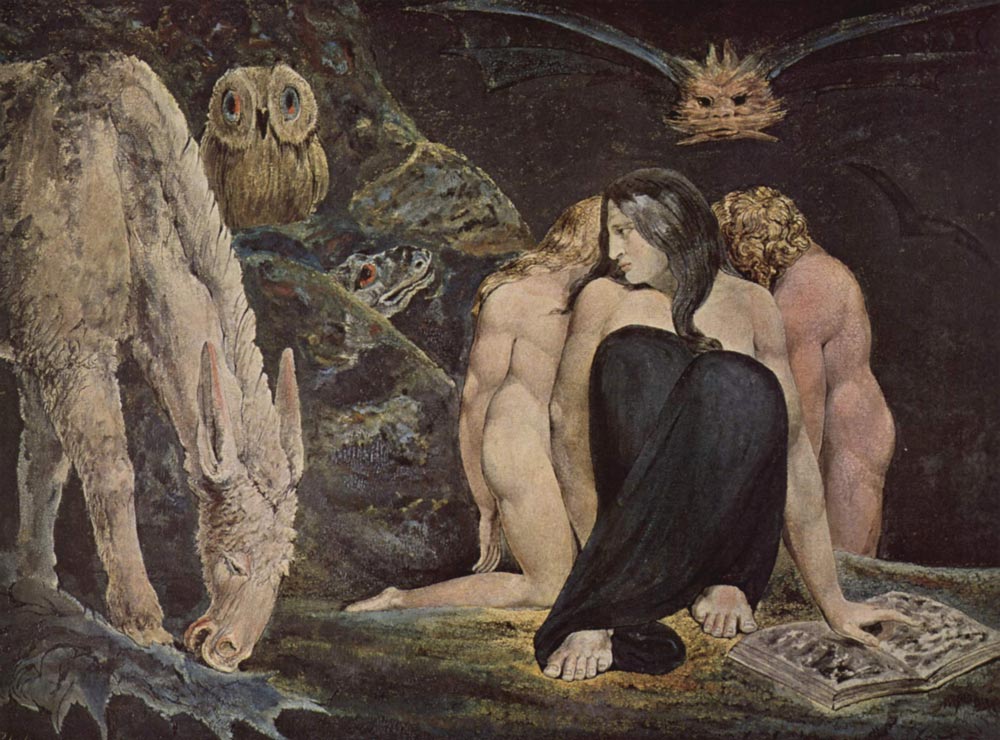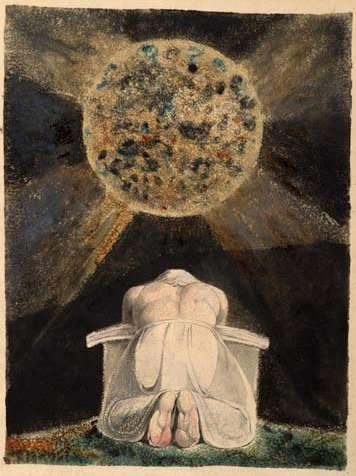| William Blake | |
|---|---|
 |
|
| Born | Nov. 28, 1757 London, Kingdom of Great Britain |
| Died | Aug. 12, 1827 (at age 69) London, United Kingdom |
| Nationality | English |
| Movement | Romanticism |
| Field | Writing (poetry), painting, printmaking |
| Works | View Complete Works |
William Blake of England was one of the most remarkable men in history, but during his time, he was relatively obscure and mostly unknown. And those who did know him considered him “peculiar” or perhaps even insane.
His friend William Wordsworth, the famous poet, said that Blake was “certainly mad” — but Wordsworth also added, “his madness interests me.”
Artist, Poet, and Mystic
Blake is known today as much for his poetry as his painting. But he was also a mystic, a man of strange visions, and an artist who is almost impossible to classify. He was certainly an exceptional intellectual who was intelligent enough to understand the physics of Isaac Newton and its implications. At the same time, Blake was able to bring form to the mystical visions of an incredibly unfettered, wild-minded artist.
Early Years, Development, Education
William Blake was born in 1757 in the London district of Soho. He spent most of his life in and around London except for a three-year stint living in the village of Felpham in West Sussex. His father was a maker of legwear. William was the fourth of seven children. Blake attended school until the age of 10, but most of his education as provided by his mother, Catherine Wright Armitage Blake.
The fact that his family belonged to a religious sect known as the Dissenters certainly had a life-long influence on Blake. That’s because Dissenters were basically rabble-rousers who questioned everything, especially the dominant established religions of the day. In England that was the Church of England, the Catholic Church and a few others.
 Blake’s life as an artist began when he began to make engravings of drawings based on Greek antiquities purchased by his father. This exposed Blake to the great artists of the past, such as of Raphael, Michelangelo and Albrecht Dürer.
Blake’s life as an artist began when he began to make engravings of drawings based on Greek antiquities purchased by his father. This exposed Blake to the great artists of the past, such as of Raphael, Michelangelo and Albrecht Dürer.
This work led in turn to an apprenticeship with professional engraver James Basire, for whom he worked for seven years until age 21.
Blake then went on to study at London’s Royal Academy, where he became well known as a maverick and for his rebellious attitude toward authority, including questioning the views of his artistic masters.
Other happenings during this time influenced the development of Blake’s one-of-a-kind personality as well, including a controversial role he played in an event known as the Gordon Riots. This was an event in which mobs accosted the Newgate Prison in London, set it on fire and released the prisoners. The motivation for the violence was religious and involving issues between the government of Engand and the Catholic Church.
Highly Innovative, Stormy Relationships
 During his formative years, Blake’s odd and highly innovative way of thinking about each and every issue of the day sometimes landed him in hot water with others. It is known he was taunted and bullied at times. He also was unlucky in love early in his life. The love of his life refused his marriage proposal, leaving him shattered and heartbroken. However, this broken relationship led to his pairing with Catherine Boucher, an illiterate women who signed their wedding contract with an “X.” Blake would later teach her to read and write, but also bring her along in the engraving trade, in which she became an invaluable partner to her husband.
During his formative years, Blake’s odd and highly innovative way of thinking about each and every issue of the day sometimes landed him in hot water with others. It is known he was taunted and bullied at times. He also was unlucky in love early in his life. The love of his life refused his marriage proposal, leaving him shattered and heartbroken. However, this broken relationship led to his pairing with Catherine Boucher, an illiterate women who signed their wedding contract with an “X.” Blake would later teach her to read and write, but also bring her along in the engraving trade, in which she became an invaluable partner to her husband.
Blake published his first work of poetry, “Poetical Sketches,” when he was about 25 years old. During this time he also opened a print and engraving shop with some partners from his apprentice days. This was a time of incredible interaction for Blake with some of the brightest, bold and radical intellectuals of the day – people such as “Frankenstein” author Mary Wollstonecraft Shelley, the American patriot Thomas Paine and poet William Wordsworth. All of these luminaries would often gather in the home of Blake’s printing partner Joseph Johnson, who historians call a “radical publisher.”
Understanding Blake
 To understand William Blake, one must understand the nature of his work. It involved providing illustrations and engravings for the great literary works being produced during that time. These were often the works of poets and writers of cutting-edge and esoteric philosophies. He also produced illustrated engravings for classics, such as works of the Bible and epics, such as Dante’s “Divine Comedy.”
To understand William Blake, one must understand the nature of his work. It involved providing illustrations and engravings for the great literary works being produced during that time. These were often the works of poets and writers of cutting-edge and esoteric philosophies. He also produced illustrated engravings for classics, such as works of the Bible and epics, such as Dante’s “Divine Comedy.”
While doing this kind of work to earn his living, Blake was in a constant state of composing his own literary works and poetry, creating paintings, engravings and prints. He was also well-known to be a public rabble rouser, not in a violent “fight in the streets” sense, but in offering his intellectual criticisms of the mainstream thoughts and politics of the day.
Here Blake was years ahead of his time. For example, he was a powerful critic of slavery. He also was a proponent of “free love,” which would have been extraordinarily radical in late 1700s England. Blake held a dim view of the British Monarchy, saying that a country with a king “makes all men slaves.”
But just like his art and poetry, Blake’s true political views are difficult to classify. Many historians consider Blake a flat-out anarchist. This is probably a bit oversimplified, although somewhat accurate. One must remember that Blake had a powerful tendency to be a questioner and a contrarian in all matters. Nothing irritated Blake more than rules and dogma. He was the kind of guy that felt that all rules were meant to be broken. He felt that the minds of men generally were not free – because they were controlled by the brain washing of their religions, and their blind loyalty to country, king and state.
Difficult to Classify
Over the years hundreds of scholars have struggled to define the art of William Blake. One of the reasons no good classification may ever fit is that most of Blake’s work as deeply personal and introspective – it as based on dreams and visions that only he had.
Blake was never a man of his times – he was an extreme individualist. Although he was nominally a Christian – he maintained that he accepted Jesus Christ was his savior – the way in which he approached his relationship with God fit no formal church, organized religion or any other commonly held beliefs.
Blake might be considered a “way out there” New Ager today. He was said to have experienced visions of angels and other mystical beings starting at age four. On one occasion Blake reported observing angelic beings hovering above the backs of a group of workers in a hayfield.
William Blake died in 1825 in his home in London with his beloved wife Catherine by his side. He was said to have talked about visions of heaven. He died while talking and singing about what he was seeing “on the other side.”